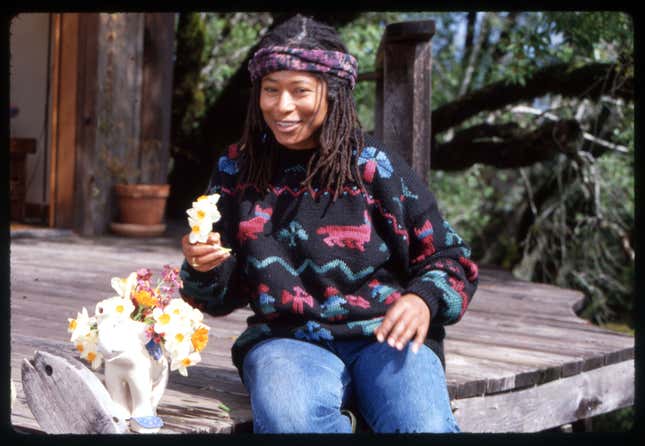
Before there was a 1985 movie, a musical, or a 2023 movie reboot, there was Alice Walker’s 1982 book, “The Color Purple.” Required reading in many English classes, Walker’s novel is a powerful story about resilience and the bonds of sisterhood.
In a series of letters to God, the main character, a young Black girl named Celie, tries to cope with the painful abuse she suffers at the hands of a man she thinks is her father and eventually the man she is forced to marry. But it is her relationships with women, including her husband’s mistress, that help her find the strength to start over.
The book received equal amounts of praise and criticism for touching on themes of homosexuality, incest and violence. And there is no doubt “The Color Purple” will impact the culture for generations to come. So in honor of the 2023 film reboot, we wanted to look at some of the reasons why the book is so special.
The Story Was Inspired by Walker’s Family
It’s easy to get lost in Walker’s touching story of strength and the power of love. And I dare you not to root for the female protagonists to find the love and respect they deserve as you read. But one of the reasons the story is so poignant is because it is inspired by characters and events from Walker’s own family she learned about growing up.
As Salamishah Tillet, author of “In Search Of The Color Purple: The Story Of An American Masterpiece,” told Elle in an interview about the book, the character Sofia was based on Walker’s mother and Shug Avery was based on a woman who shared a husband with her grandmother, who inspired Celie’s character.
“It came from spending a lot of time with my grandparents when I was 8. All the stories I heard about them were fascinating. Both grandfathers had been horrible as younger men. They were batterers. They did terrible things to their children, to their wives. They always had other women,” Walker said of the story in an interview. “Part of the creation of ‘The Color Purple’ is just out of a longing, to be more intimate with my ancestors at a time when I didn’t exist,” she added.
The Book Makes More of Celie and Shug’s Relationship
In the book, Alice Walker describes Celie’s attraction to her husband’s mistress, Shug Avery, and writes about their intimacy – Celie’s first experience with loving, consensual sex. But the movie versions downplay the pair’s relationship, a fact which has caused a lot of controversy in the industry and in the Black community.
According to the 1985 film’s director, Steven Spielberg, much of what Walker wrote was toned down in the film for rating’s sake.
“There were certain things in the [lesbian] relationship between Shug Avery and Celie that were finely detailed in Alice’s book, that I didn’t feel could get a [PG-13] rating,” he said in a 2011 interview with Entertainment Weekly. “And I was shy about it. I basically took something that was extremely erotic and very intentional, and I reduced it to a simple kiss.”
She Had to Get Out of New York to Write
Walker said she tried writing “The Color Purple” while living in Brooklyn and San Francisco. But she couldn’t quite get things right until she settled in the northern California town of Boonville, where she and her partner at the time rented a cottage for $300 per month. Walker says it was the perfect setting to explore her story and characters without distractions.
“I was carrying sometimes up to 12 people in my mind, and they were all talking, and they were all thinking, and they were all planning their next adventure, so I didn’t have a lot of room for other things. And so it was such a delight to be able to just take a year and have all that going on almost all the time,” she said.
The Book Helped Alice Walker Make History
Alice Walker received lots of praise for “The Color Purple,” including one of the most coveted industry accolades – the Pulitzer Prize for Literature in 1983. The award made Walker the first African-American woman to receive the honor. “The Color Purple” also received National Book Award from the National Book Foundation that year.
But It’s Also a Frequent Target of Book Bans
Although “The Color Purple” has received critical acclaim across the literary world, it also has its fair share of haters. The book has been criticized for touching on themes of homosexuality, rape, incest and violence and for including explicit language. The book has been banned from school libraries across the country. And in 2017, it was banned from all Texas State Prisons for “use of explicit language and graphic depictions of violence.”

